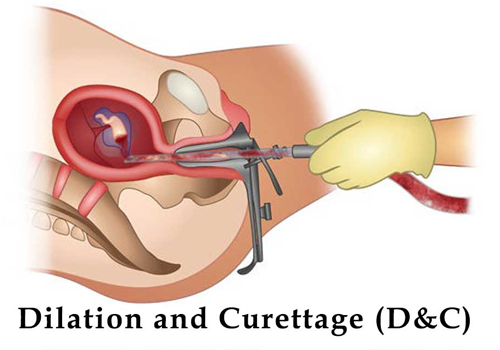Recently my father suffered from prostate then we go eternal hospital and consulted with Dr bhanu Kaushik. Now my father feeling well so thank you very much Dr bhanu. He is very humble and dedicated towards his work. He is Excellent doctor with nice behaviour toward patient. Thanks

Dilation and Curettage (D&C) is a minor surgical procedure performed to remove tissue from the uterus. It is often used for diagnostic or therapeutic purposes, depending on the patient’s condition.
What Happens During a D&C?
-
Preparation:
- Anesthesia: The procedure is typically done under local, regional, or general anesthesia to ensure patient comfort.
- Cervical Dilation: The cervix is gradually dilated using medications or dilators to allow access to the uterus.
-
Curettage:
- A thin instrument (curette) is inserted into the uterus to gently scrape or suction out uterine tissue.
-
Completion:
- The collected tissue may be sent to a lab for analysis if required (e.g., to check for abnormalities or confirm a miscarriage).
Reasons for a D&C
-
Diagnostic Purposes:
- To investigate abnormal uterine bleeding.
- To diagnose uterine conditions, such as fibroids, polyps, or cancer.
- To confirm the presence of certain reproductive conditions, like endometrial hyperplasia.
-
Therapeutic Purposes:
- To remove remaining tissue after a miscarriage or abortion.
- To treat heavy or prolonged bleeding.
- To clear out the uterine lining in cases of incomplete miscarriage or molar pregnancy.
- To remove placental fragments after childbirth.
Procedure Duration
- The procedure typically lasts 10-20 minutes, but patients may need a few hours at the clinic or hospital for preparation and recovery.
Post-Procedure Recovery
-
Physical Recovery:
- Mild cramping and light bleeding may occur for a few days.
- Most women can resume normal activities within a day or two.
-
Follow-Up Care:
- Avoid inserting anything into the vagina (e.g., tampons, douching) or sexual activity for about 1-2 weeks to reduce infection risk.
- Follow the healthcare provider’s advice on managing pain and other symptoms.
-
Watch for Complications:
- Contact your doctor if you experience heavy bleeding, fever, severe pain, or foul-smelling discharge, as these may indicate an infection or other complications.
Risks of a D&C
- Infections: Rare but possible if bacteria enter the uterus during the procedure.
- Uterine Perforation: Rare; occurs if the instrument punctures the uterine wall.
- Cervical Damage: May occur during dilation.
- Asherman’s Syndrome: Rare scarring of the uterus that may affect future fertility.
- Bleeding: Usually mild, but heavy bleeding may occur in rare cases.
When is a D&C Recommended?
- D&C is advised when less invasive treatments are ineffective or when precise tissue removal or diagnosis is necessary.





